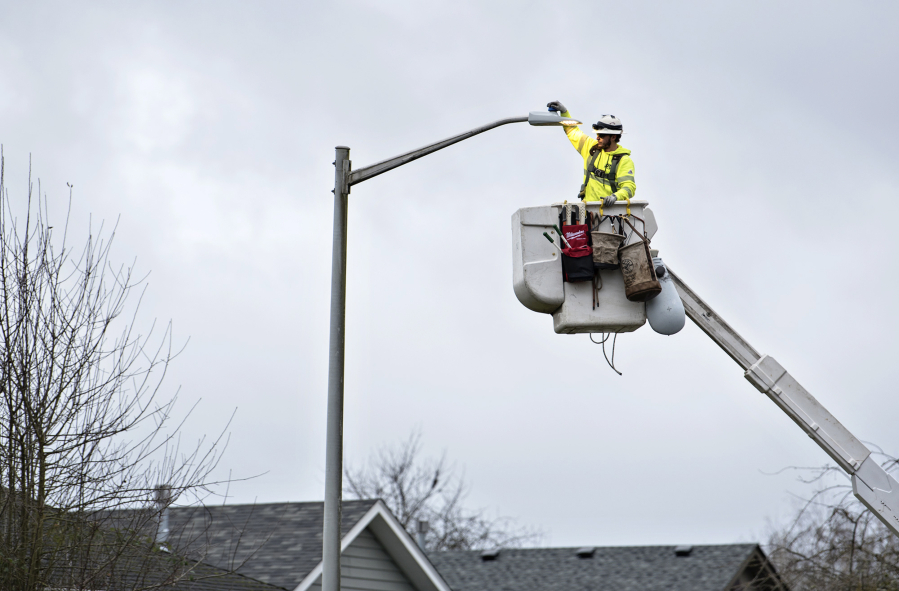BATTLE GROUND — It was a dreary Thursday, but crews around Battle Ground were working to bring some light to the city.
DJ’s Electrical spent time replacing streetlights in Battle Ground with LED bulbs. The change to the city’s 2,300 streetlights from high-pressure sodium to LED bulbs is part of an energy-saving initiative in the city.
“A lot like people are doing at home, we’re changing out our lights to more efficient ones,” said Scott Sawyer, the city’s public works director. “These have longer lifespans, and will help us save citizens money.”
The project will cost around $530,000 and is fully funded through a grant from the Washington State Transportation Improvement Board’s Relight Washington Program and Clark Public Utilities’ Energy Savings Incentives program, with $358,000 coming the from state grant and $172,000 coming from the incentives program.
The new LED bulbs are expected to save the city $53,000 in energy costs and another $15,000 on maintenance costs annually.
Sawyer said the city is using a 3,000 Kelvin temperature bulb, which is a bit less than some streetlights outside of the city that have been switched to LED bulbs.
“We heard some concerns about whether the new lights would affect sleeping patterns in residential areas,” he said. “We went with a softer light.”
Battle Ground isn’t the only city switching out streetlights to LED bulbs. Battle Ground teamed up with Ridgefield and Washougal to bid out the work because the materials and labor were less expensive that way, according to Bryan Kast, Ridgefield’s public works director. All three cities received grants from the state board to fund the project.
Ridgefield’s portion will finish work that started in 2013, when the city participated in a pilot project with the improvement board to upgrade more than 350 “cobra head” style lights along main roads to LED bulbs. In early 2014, the city changed design standards to require LED bulbs on all projects.
This year, Ridgefield will upgrade the remaining 640 lights to LED bulbs, which is expected to be completed in February. Kast said the project will cost $117,000, half coming from a state improvement board grant and half from incentives from Clark Public Utilities and Bonneville Power Administration.
The upgrades in 2013 saved Ridgefield about $16,700 annually in electricity costs, and the current project is expected to save an additional $17,280 annually, Kast said.
Washougal’s portion of the project will change out all 1,707 city-owned street lights to LED bulbs. The city has 852 cobra head lights, 672 acorn lights and 183 post-top lights.
The estimated cost of the project is $210,803, with half coming from the state improvement board grant, and half coming from Clark Public Utilities incentives.
Camas update
The city of Camas underwent a $3 million project to replace more than 3,100 streetlights with LED bulbs in 2016.
Steve Wall, the city’s public works director, said the estimated savings for the city were $97,000 a year, which ended up being too conservative an estimate.
“The energy savings were better than expected based on calculations completed during the design phase,” he said. “The city verified our energy savings after having the lights in service for approximately one year, and the actual energy savings were approximately $35,000 more than anticipated.”




